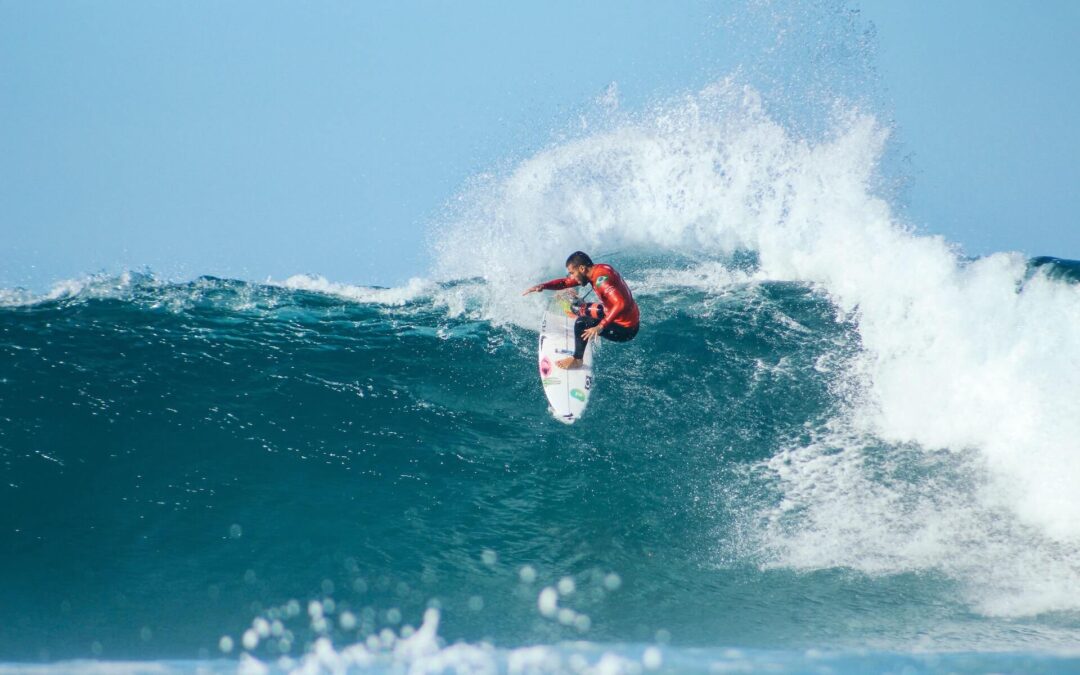Knee problems can stem from numerous factors. If you’ve ruled out any significant trauma or degeneration, this post will make some strong assumptions about why surfing could be contributing to knee issues.
If you surf and you have a knee problem, the first strong assumption is that your trailing leg is the one suffering. So if you’re regular-footed, it’s probably your right knee, and if you’re goofy, it’s probably your left knee. If I am wrong, you have a good enough reason to stop reading this post.
Your paragraph is clear, but here’s a slight revision for clarity and flow:
When we adopt a surfing (or skateboarding) stance, the back knee tends to cave inward, a phenomenon known medically as valgus collapse. This inward collapse is a deliberate technique necessary for effective surfing and not something we aim to alter. However, it does place stress on the inside of the knee, as there is less muscular support and greater reliance on ligaments to stabilize the knee. Over time, this can lead to knee pain or injury as the knee tissue undergoes degeneration.
When you stand on the board, your hips rotate toward the back foot (i.e., natural footers have hips rotated to the right), while the torso rotates toward the front foot. Over time, this creates imbalanced loading through the spine, hips, knees, and ankles. These factors are significant, and their effects accumulate slowly.
There are other factors, apart from the obvious wipe-out or impact forces, which can cause strain on the inside of the knee and therefore pain. These include: lack of lateral hip stability (a weak ass), lack of hip mobility (you’re a stretch/yoga hater), lack of ankle stability (feet rolling inward leading to the knee falling inward) and lack of ankle mobility (you can’t squat to save your ass). Restricted mobility above the knee (hip) and below the knee (ankle), means the knee has to compensate to get into your funky surf positions. Soft tissue work to free up tight tissue, mobility work to get more range, stability work to get foundations of strength and strength/power work to become superhuman is all you need to do really!
Now let’s delve into the roots of knee issues and DIY rehab techniques to get you on your way.
Soft Tissue Work
Muscles, fascia (connective tissue surrounding muscles), tendons (which attach muscles to bones), and ligaments (which attach bones to bones) undergo changes over time in response to the stress placed on them. Tissues can become dysfunctional due to various factors such as lack of mobility and strength (which can place unnecessary strain on other tissues), past injuries, poor movement patterns (like squatting with knees collapsing inward or running with foot pronation), and repetitive movements. Additionally, dietary habits that promote inflammation in the body can also contribute to tissue stress. These factors can affect the tissues above and below the knee joint, potentially influencing the knee’s movement in a suboptimal way. If you don’t have access to a good physical therapist, there are self-care techniques you can try using tools like a golf ball, cricket ball, tennis ball, or an unloaded barbell. Some key areas to focus on include:
1. Glutes
Glute stiffness and tightness could impede proper movement at the hip joint, consequently affecting the knee joint. To address this, lie on your back and position a golf ball or tennis ball under either your right or left glute. Bend the knee on the same side and place the foot over the opposite knee. This position helps stretch the targeted glute effectively. Apply pressure to the area for about ten seconds before moving on to address other tight areas nearby.
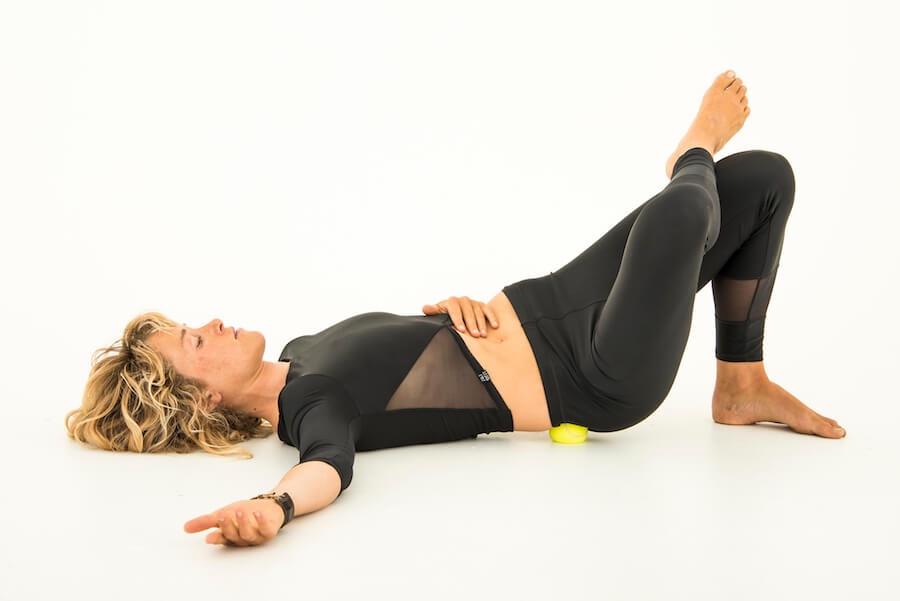
2. TFL (Tensor Fasciae Latae) muscle
This is the muscle that attaches to the side of your hip and inserts into the ITB. If the TFL is tight, it can contribute to ITB issues, potentially pulling the kneecap to the side and causing pain. It’s a common problem and can be quite sore. To target this area, lie on your side with your knees bent in a fetal position and place a tennis ball, golf ball, or cricket ball (depending on your preferred pressure) on the soft tissue at the side of the hip.
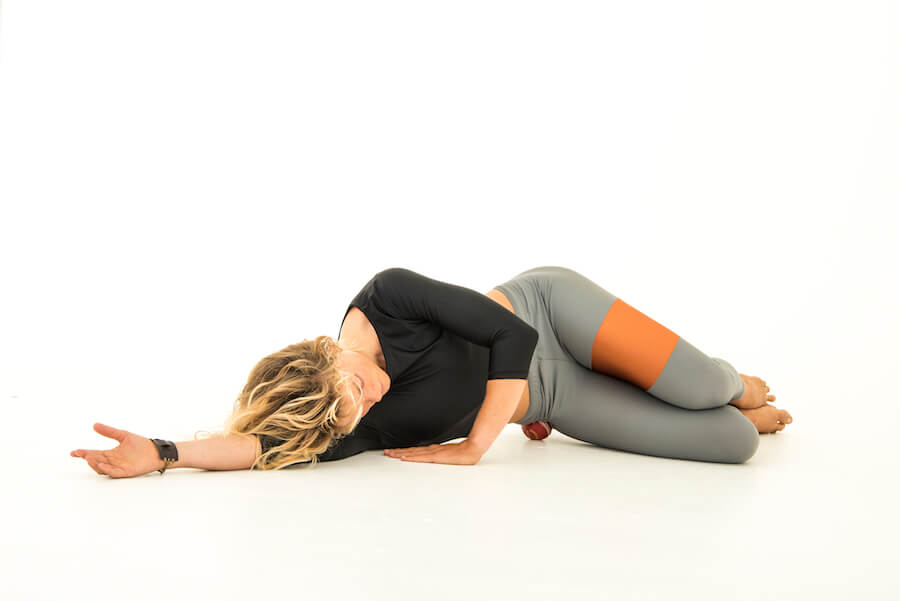
3. ITB (Iliotibial Band) / Outer Quads
Lie on your side and place a tennis ball just above the knee. Hold for no longer than 10 seconds, trying to exhale and relax into the pain as much as possible, then move the ball up a little and repeat. You can move all the way up the TFL, although I generally skip the top third of the thigh.
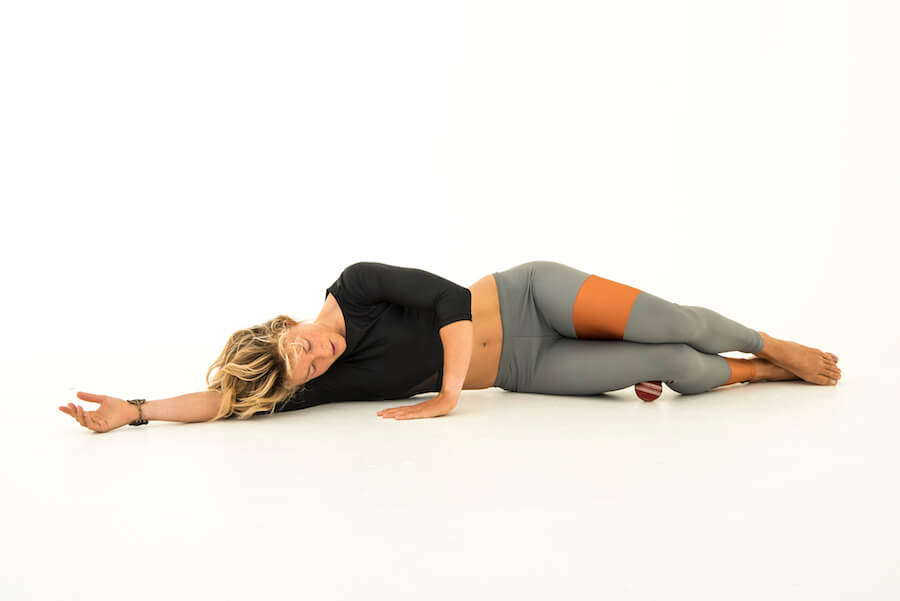
4. Hip flexors, Quads, Adductors
These can heavily influence the tracking of the kneecap, as they insert just below the joint and some into the patella tendon. For some tissue smashing with a barbell, sit on the floor with your leg extended out and place an unloaded barbell at the top of the knee (not on the knee or any bone) and work up to the top of the thigh. You can turn your leg inward to work through more of the outer quads and some of the ITB, turn your leg outward to target more of the inner quads and some adductors, or stay neutral to address the middle quads and hip flexors at the top.
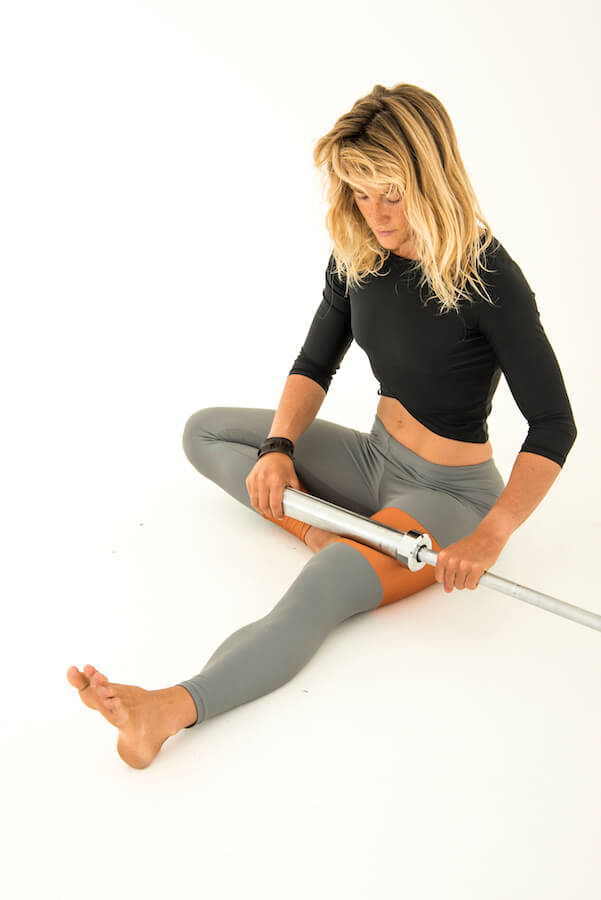
You can also get into the quads, hip flexors and adductors (shown in picture below) with a ball. Move the ball in the direction of knee to hip.
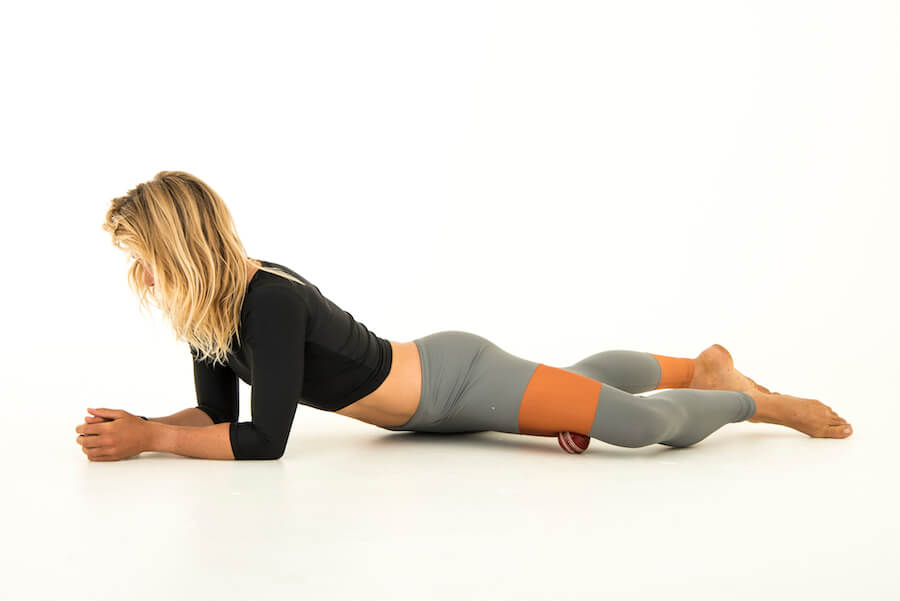
5. Hamstrings
Often a major obstacle to achieving enough hip flexion to squat down without experiencing rounding of the back like some sort of primal animal. Tight hamstrings can also exert tension on the knee joint where they insert. You can target these muscles with the barbell, either with the assistance of a partner guiding the bar up the leg, or by setting the barbell to a low position in the squat rack and gently sitting on the bar, extending and flexing your knee to stretch. This method can be quite intense. If you don’t have the convenience of owning a standard barbell at home, you can place a golf, tennis, or cricket ball under your thigh while sitting on a bench. Although it doesn’t provide the same level of intensity, it’s a viable alternative.
6. Calves
The loyal gastroc and soleus muscles… Most people don’t visit a masseuse to have their calves kneaded, but these muscles endure such heavy stress every day that you’ll either laugh or cry when you delve into them deeply. Once again, due to their insertions, they can significantly influence knee mechanics. My favourite method for addressing tight calves involves kneeling on the floor and placing a golf, tennis, or cricket (the worst) ball between your thigh and shin bone, allowing your calves to receive a good amount of pressure from your own body weight. Move the ball from the top of the calf (near the knee joint) to the bottom (along the Achilles tendon) and back up again.
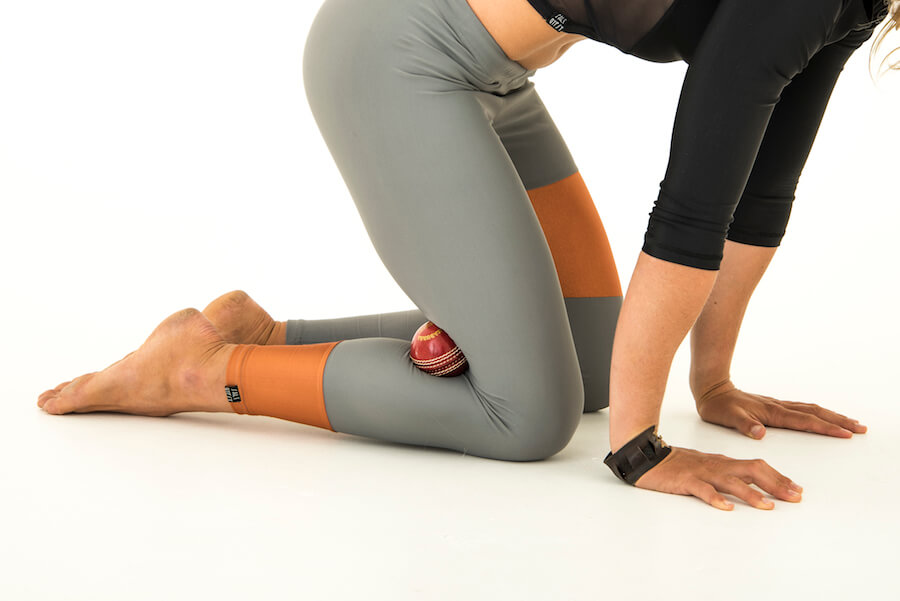
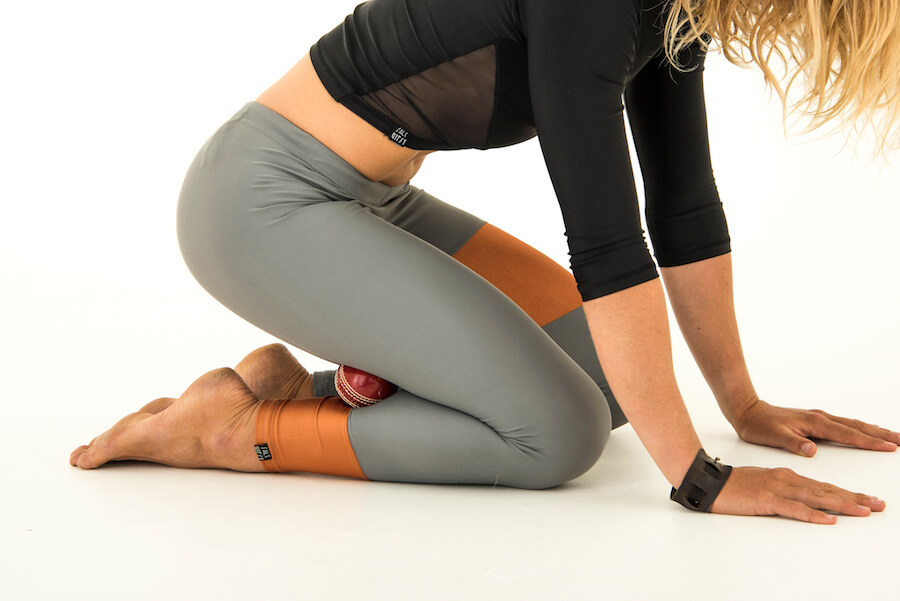
7. Foot
Compromised tissue under the foot can affect the way your ankle moves. How your ankles move affects how your knees move. How your knees move affect how your hips move. How your hips move affect how your spine, shoulders and neck move.
Your feet most likely never get any attention, so give them a bit of love. To get more specific with pressure (than possible with a tennis ball), you can also use a golf ball.
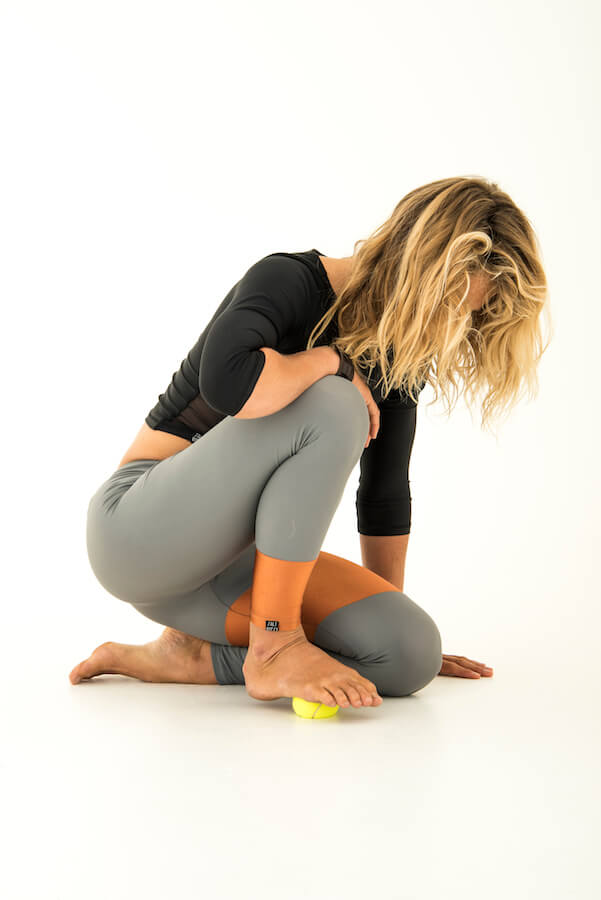
Hip Mobility and Ankle Mobility
If you have dodgy range in the hip and ankle, you’re likely to do dodgy things at the knee to compensate for the lack of movement above and below. This could be something like caving your knee inward to compensate for an ankle that wants to cave in all the time since it can’t bend properly. Knees collapsing inward when squatting, jumping, running, lunging and stepping can overstretch the medial structures of the knee (such as the MCL) and cause pain. Add some heavy load to a knee that caves in and you have a recipe for ligament tears. This is why coaches often emphasize keeping the knees aligned with the toes during exercises.
Inadequate ankle mobility along with tight calves prevents the knee from moving forward over the toes enough. This causes the foot to compensate by collapsing in, or pronating (allowing for more forward knee migration). When the foot pronates, the tibia internally rotates, which leads to hip internal rotation and hip adduction, and therefore the knee caves in (also called Knee Valgus).
Glute / Hamstring Strength
Insufficient gluteal and hip strength, vital for extending, abducting, and externally rotating the hip, coupled with potentially overactive hip adductors, hinders effective femur stabilization. Consequently, the hips may shift towards adduction and internal rotation, or lead to a squatting posture reminiscent of an urgent need for the restroom.
Insufficient strength in the medial hamstrings can impede proper knee stabilization, resulting in inward knee collapse.
Strengthening your glutes also gives you a rounder, perkier and harder butt which has many side benefits.
Quad Strength
Inadequate inner quad (VMO ) strength can impede proper knee stabilization, resulting in the knee to move inward.
Deep Squatting
Good or Bad for the Knee ? Read this post by clicking here.
Training Plan for Knee Pain
- Check yourself for overly tight soft-tissue and sort it out with a therapist or with your own balls!
- Work on any restrictions you may have in the ankle or hip joints. I teach a series of band self-mobilisations and contract-relax stretches, however have not included these in this post. Maintain your flexibility and don’t neglect your stretching if you know you need it.
- Work on stability drills whilst keeping your knee pointed over your toes.
- Strengthen your ass!
For more information and further techniques, visit Fluid Surfer The Book. You can also find all of these techniques taught in video format at Surf Strength & Conditioning.
